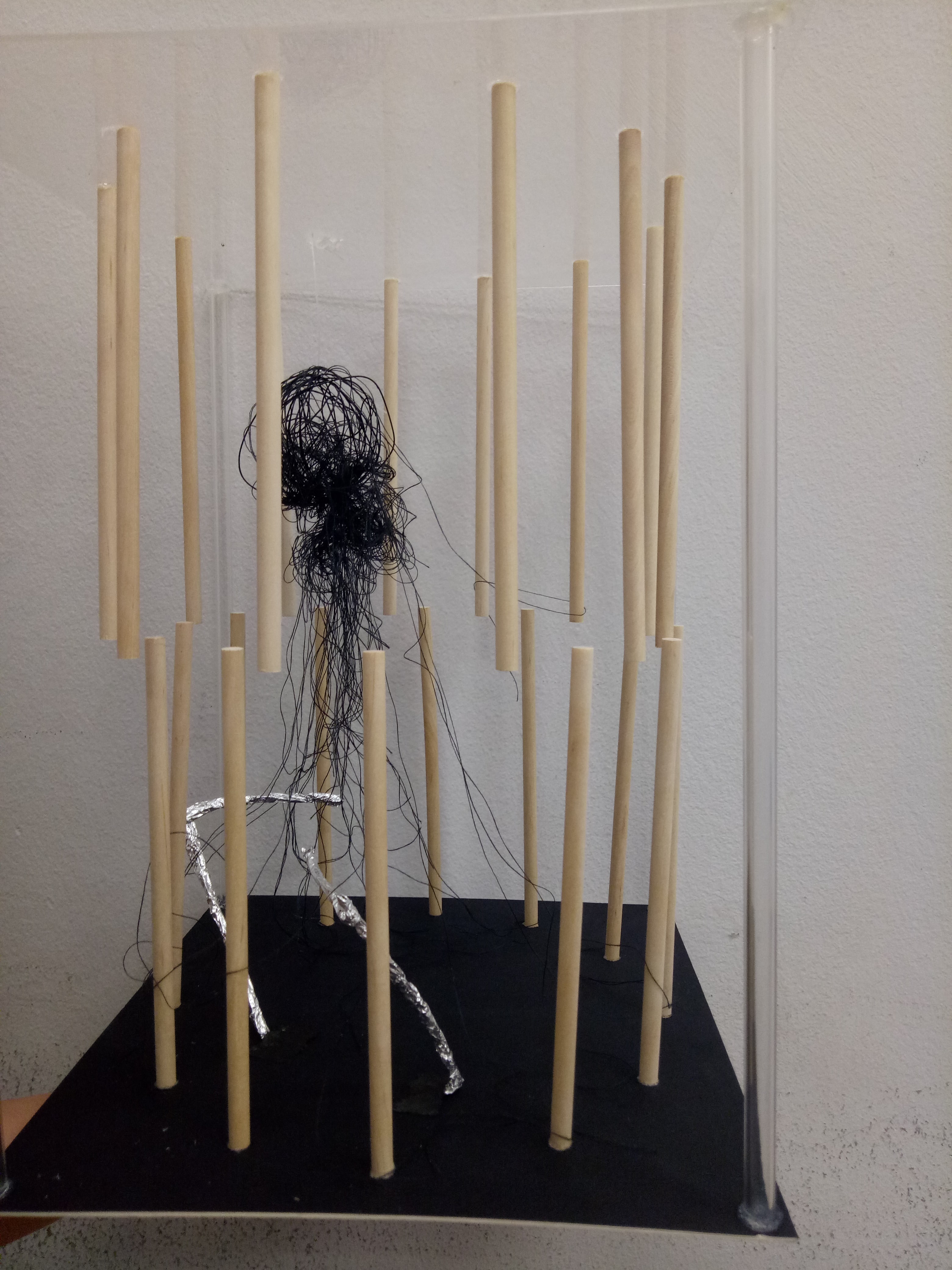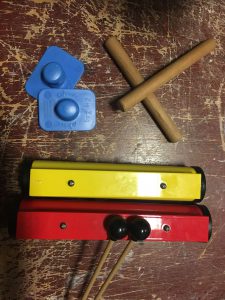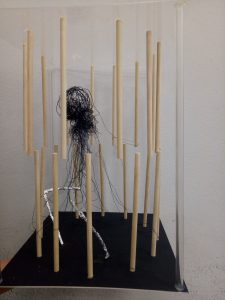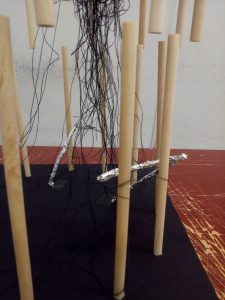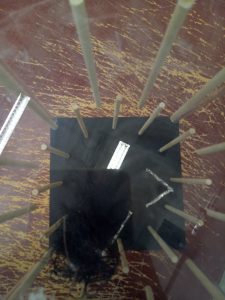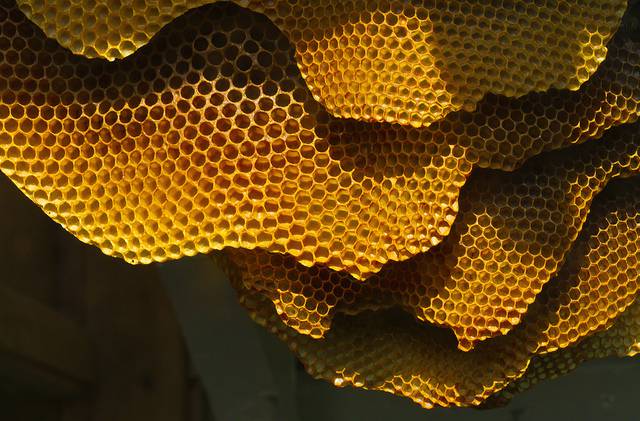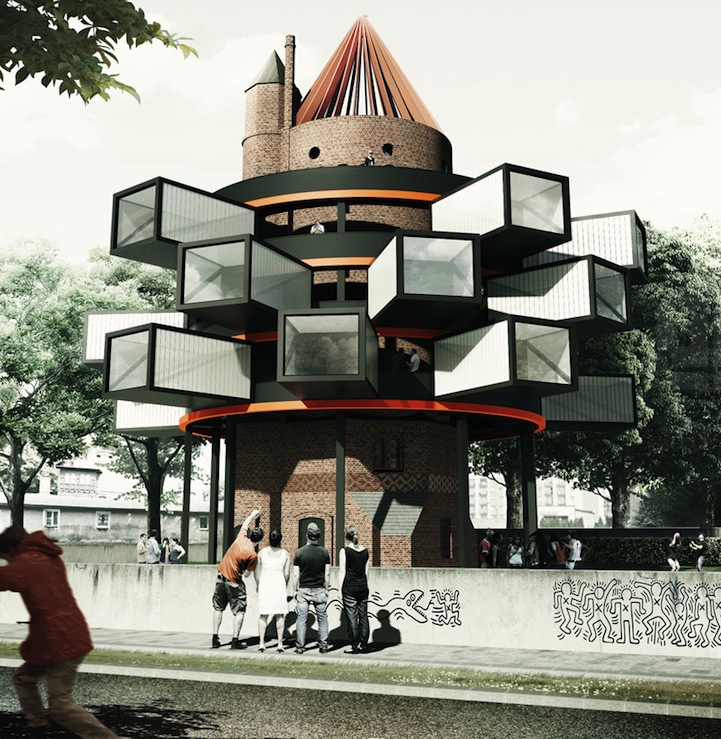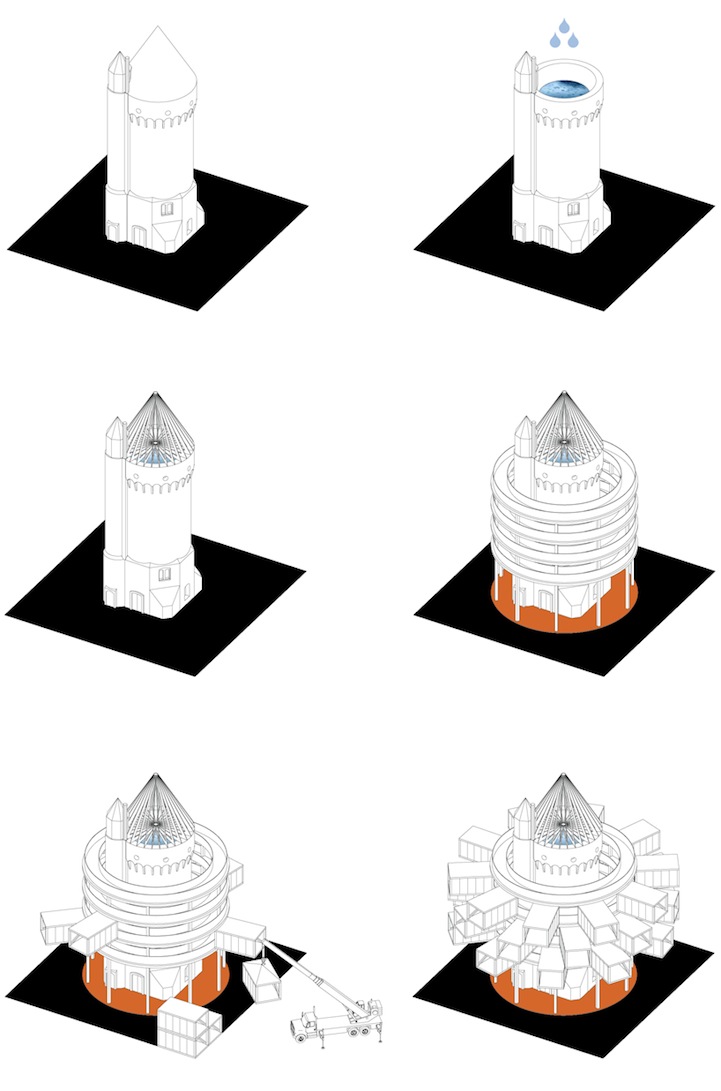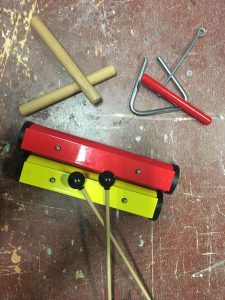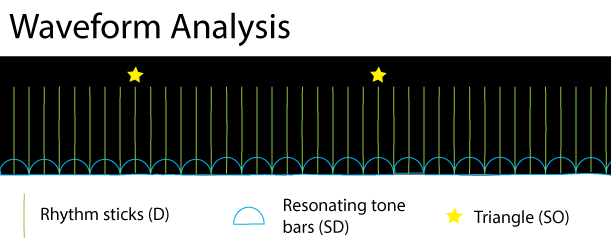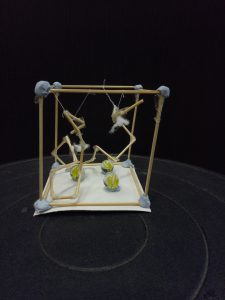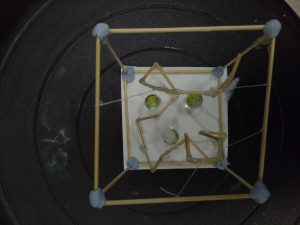For the group mood box, we decided to use the other recording (the one I didn’t use). For that sound, we used rhythm sticks, triangle, and zig zag board.
This is the sound.
Here is my waveform analysis for the sound.
Mood Box
Here is our final group mood box.
We put the model in a circular arrangement to represent repetition, although there is some kind of starting point indicated by the positioning of the wire (wrapped with aluminium foil) and the ball of wire and thread.
The wooden sticks represent the dominant, constant sound of rhythm sticks. They sound very stable and straightforward, hence we placed wooden sticks in the straight directions. The up-and-down positioning suggests that the sound is all over the place.
The wires wrapped with aluminium foil represent the subordinate, which is the zig zag board. The texture of crumpled foil suggested the rough, edgy sound of the friction. The sharp cuts of the sound is represented by the sharp edge of the wires.
The subdominant sound, which is the triangle, is represented by the ball made of wire and thread. The thread tangled all over the place since the sound of the triangle kind of “melted” into the entire recording and enveloped the other sounds.
We also tried to make the frame “invisible” by using transparent acrylic and tubes to frame.
We put black as the base and thread color to give a darker, more mysterious mood; but it is the calming kind of darkness.
Reflection
The challenges when creating this model:
One, the positioning of the up-and-down wooden sticks. We couldn’t get the positions right although we tried using several different methods; they always ended up a bit off.
Two, using the right amount of glue. If we used too much (especially on the transparent acrylic), it would look very messy. If we used too little, they wouldn’t stick very stably.
In the end, we required more time than we actually predicted due to those challenges. However I think our end result is good as our intention is clearly expressed in the model.
